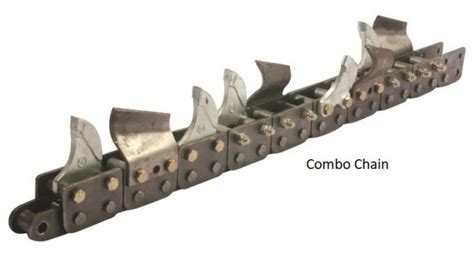
Trenching Chain for Chainsaw: A Comprehensive Guide
In the realm of landscaping and excavation, trenching chains are indispensable tools for creating precise and efficient trenches for various purposes, ranging from irrigation systems to electrical and plumbing lines. These specialized chainsaw attachments are designed to transform an ordinary chainsaw into a versatile trenching machine, allowing users to effortlessly carve through the toughest soils with minimal effort.
Understanding Trenching Chains
Trenching chains are characterized by their unique tooth design, which sets them apart from regular chainsaw chains. Their teeth are typically larger and more aggressive, featuring extended cutting edges that effectively pulverize soil and debris during the trenching process. Additionally, these chains are manufactured using durable materials, such as carbide or hardened steel, to withstand the rigors of trenching operations.
Applications of Trenching Chains
The versatility of trenching chains makes them suitable for a wide range of applications, including:
- Irrigation Systems: Trenching chains are commonly used to create trenches for irrigation pipes, allowing for efficient water distribution in gardens, lawns, and agricultural fields.
- Electrical and Plumbing Lines: Trenching chains are employed to dig trenches for electrical cables, water pipes, and drainage systems, ensuring safe and reliable installation.
- Foundation Work: In construction projects, trenching chains are utilized to create trenches for foundations, footings, and retaining walls, providing a solid base for structures.
- Landscaping: Trenching chains are instrumental in shaping landscapes, facilitating the creation of swales, berms, and other earthen features.
- Excavation: In small-scale excavation projects, trenching chains are used to excavate trenches for various purposes, such as utility line repairs or archaeological digs.
Selecting the Right Trenching Chain
Choosing the appropriate trenching chain is crucial for optimal performance and safety. Here are essential factors to consider when making a selection:
- Chain Pitch: The chain pitch refers to the distance between the cutting teeth on the chain. It must match the pitch of the chainsaw bar to ensure proper fit and operation.
- Chain Gauge: The chain gauge is the thickness of the chain's drive links. Similar to the chain pitch, it must be compatible with the gauge of the chainsaw bar to prevent damage.
- Chain Length: The chain length is determined by the length of the chainsaw bar. Selecting the correct chain length ensures proper tensioning and performance.
- Tooth Design: Different trenching chains feature various tooth designs, each suited for specific soil conditions and applications. Consider the type of soil and the desired trench depth when choosing the appropriate tooth design.
- Material: Trenching chains are typically made from carbide or hardened steel. Carbide chains are more durable and longer-lasting, making them suitable for heavy-duty applications, while hardened steel chains are more affordable and suitable for occasional use.
Safety Precautions when Using Trenching Chains
Operating a chainsaw equipped with a trenching chain requires utmost caution to ensure safety. Here are essential safety precautions to follow:
- Wear Appropriate Safety Gear: Always wear protective clothing, including safety glasses, gloves, sturdy footwear, and a hard hat to minimize the risk of injury.
- Inspect the Chain: Before each use, inspect the trenching chain for any signs of damage or excessive wear. A dull or damaged chain can increase the risk of accidents.
- Secure the Work Area: Clear the work area of any obstacles, such as rocks, roots, or debris, to prevent tripping or equipment damage.
- Maintain Proper Grip: Hold the chainsaw firmly with both hands, keeping your fingers away from the chain and maintaining a safe distance from the cutting area.
- Control the Chainsaw: Maintain control of the chainsaw at all times, avoiding sudden movements or excessive force. Allow the chain to do the cutting, and never force the chainsaw through the soil.
Maintenance and Care
Proper maintenance and care of the trenching chain ensure optimal performance and longevity. Here are essential maintenance practices:
- Clean the Chain: After each use, clean the trenching chain thoroughly to remove dirt, debris, and sap buildup. Use a wire brush and a degreaser to effectively remove contaminants.
- Sharpen the Chain: Regular sharpening of the trenching chain is essential for maintaining peak cutting performance. Use a chain sharpener specifically designed for trenching chains to ensure proper angles and sharpness.
- Lubricate the Chain: Lubricate the trenching chain regularly using a high-quality chainsaw oil. Proper lubrication reduces friction, prolongs chain life, and improves cutting efficiency.
- Store the Chain Properly: When not in use, store the trenching chain in a dry, cool place, away from moisture and direct sunlight. Apply a protective oil to prevent rust and corrosion.
Conclusion
Trenching chains are invaluable tools for creating precise and efficient trenches in various applications, ranging from irrigation systems to excavation projects. By selecting the appropriate trenching chain, following safety precautions, and implementing proper maintenance practices, users can harness the power of their chainsaw to tackle trenching tasks with confidence and ease.